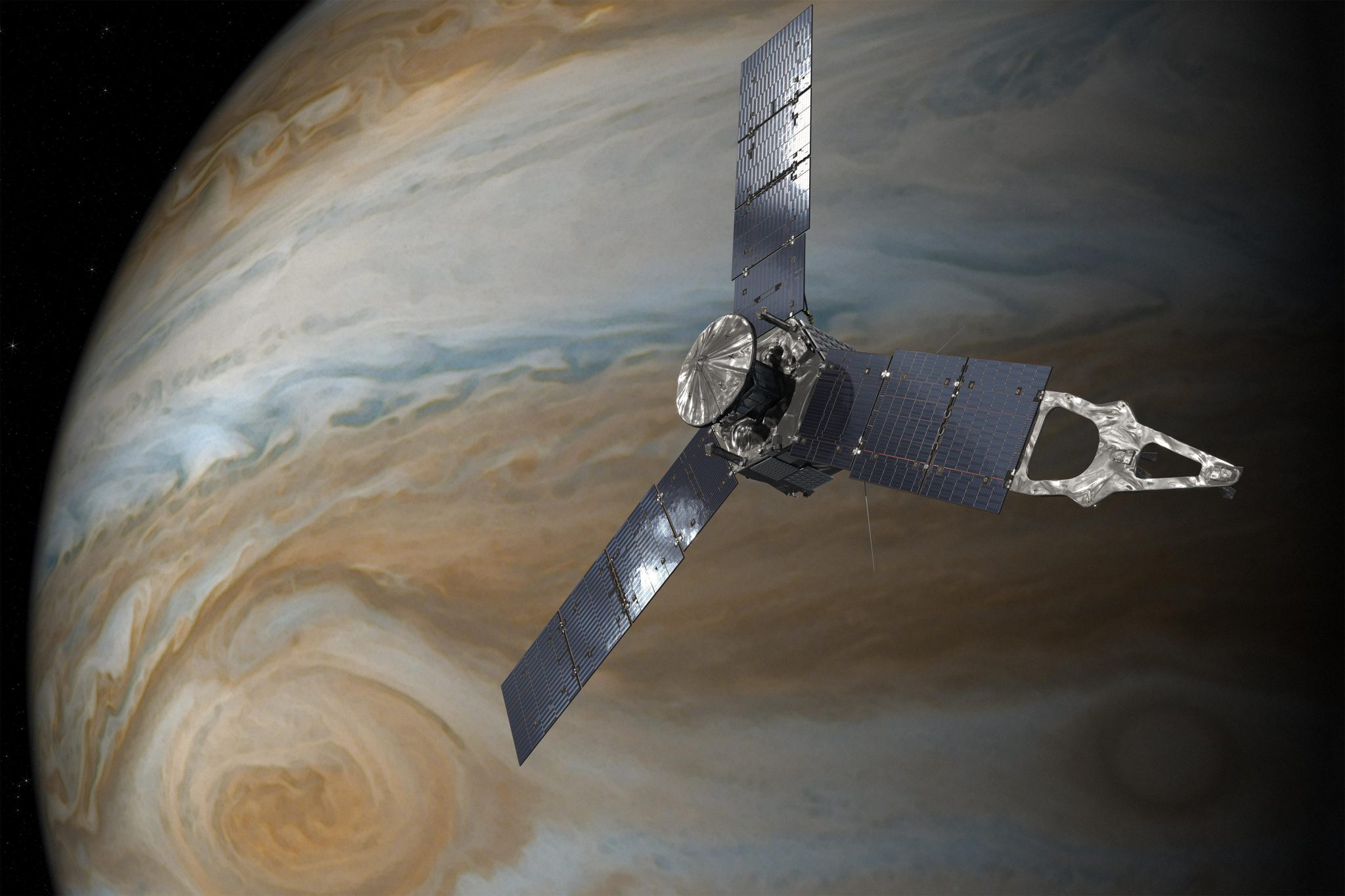For more than 10 years, the Juno spacecraft has been exploring Jupiter, unlocking the mysteries of the solar system’s largest planet. But on April 4, during the 71st approach to the gas giant mission almost failed – the vehicle twice went into emergency mode due to an unknown anomaly.

Danger near Jupiter
Jupiter is the real “monster” among the planets. Its magnetic field is 20,000 times more powerful than Earth’s, and its radiation belts resemble a giant particle booster. These belts, filled with high-energy electrons and ions, pose a threat to any technology. Even Juno’s titanium protection, designed for extreme conditions, is sometimes powerless. In eight years of operation, the vehicle has already shut down four times, but the latest incident was the most mysterious.
What happened on April 4th?
On April 4, Juno malfunctioned an hour before its planned approach to the planet. Forty-five minutes after maximum approach, the vehicle reactivated safe mode. In this state, it turned off its scientific instruments, but maintained communication with Earth. According to preliminary reports, the cause is passing through the radiation belts. It is still unclear why the defense system failed to cope with the obstacles, because earlier similar overflights were successful.
Fortunately, NASA engineers have already restored communications and are in the process of relaying information gathered before and after the incident. For now, the main task is to find out if such situations can be avoided. At the same time, the vehicle is preparing for a new stage: on May 7, it will fly past the volcanic moon Io at a distance of 89,000 km. Scientists hope that this time the spacecraft will remain operational and transmit unique data.
Juno’s importance for science
The Juno mission is key to unraveling the formation of Jupiter and its moons. Each approach provides new data on the atmosphere, magnetic fields, and structure of the planet. In addition, the study of radiation belts will help improve the defense of future missions, particularly to the moons of Europa and Ganymede, where conditions for life may exist.
As the spacecraft fights radiation challenges, it’s a reminder: space exploration is always risky. But these risks are what make science so fascinating.
Read also about the most interesting facts about the Juno mission.
According to nasa.gov


